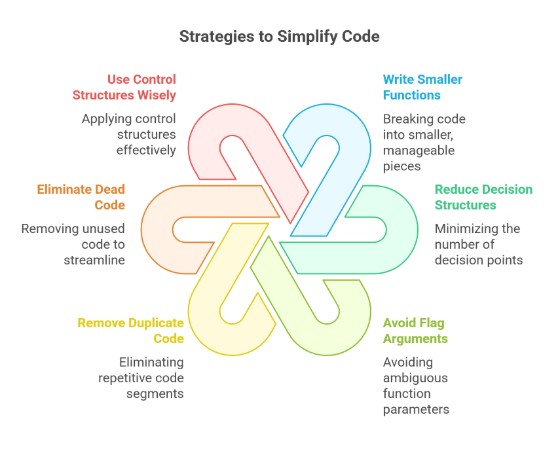How Do You Reduce Cyclomatic Complexity?
Status
answered
Status
answered
Cyclomatic complexity plays a key role in software development, reflecting the structural complexity of a codebase. It measures the number of unique paths a program can take based on decision points, such as if-else statements, loops, and switch cases.
For example, a function with no conditions has a cyclomatic complexity of 1. If you add an if-else statement, the complexity increases to 2 since there are now two possible execution paths.
# Cyclomatic complexity = 1
def greet():
print("Hello, world!") # Only one path
# Cyclomatic complexity = 2
def greet(name):
if name: # One decision point
print(f"Hello, {name}!")
else:
print("Hello, world!") # Two possible execution paths
# Cyclomatic complexity = 3
def greet(name, formal):
if name: # First decision point
if formal: # Second decision point
print(f"Good day, {name}.")
else:
print(f"Hey, {name}!")
else:
print("Hello, world!") # Three possible execution pathsWhen cyclomatic complexity is too high, developers find the code harder to read, test, and maintain. Keeping it within a reasonable range clarifies the code, reduces bugs, and simplifies testing.

Break large functions into smaller, single-purpose functions. Smaller functions are easier to read, test, and reuse.
How do you do it?
Minimize if-else chains, switch statements, and deep nesting to keep code simple and readable.
How do you do it?
A flag argument (Boolean parameter) changes a function’s behavior based on its value. It makes code harder to understand and increases decision points.
How do you do it?
# Instead of this:
def process_data(data, is_filtered=False):
if is_filtered:
return filter_data(data)
return process_raw_data(data)
# Do this:
def process_data(data):
return process_raw_data(data)
def process_filtered_data(data):
return filter_data(data)Duplicate code increases cyclomatic complexity unnecessarily.
How do you do it?
Dead code is code that is never executed or serves no purpose. It clutters the codebase and increases complexity.
How do you do it?
Nested loops and excessive conditionals make code harder to follow.
How do you do it?
# Instead of this:
if role == "admin":
access_level = 3
elif role == "editor":
access_level = 2
else:
access_level = 1
# Do this:
access_levels = {"admin": 3, "editor": 2}
access_level = access_levels.get(role, 1)Lower cyclomatic complexity makes your code more readable, testable, and maintainable. The only way it can be improved is by breaking functions into smaller pieces, reducing structures of decision, avoiding flag arguments, eliminating duplicate and dead code, and using control structures wisely.
Keep in mind that complexity isn’t always bad, but managing it effectively leads to cleaner, more maintainable software.
